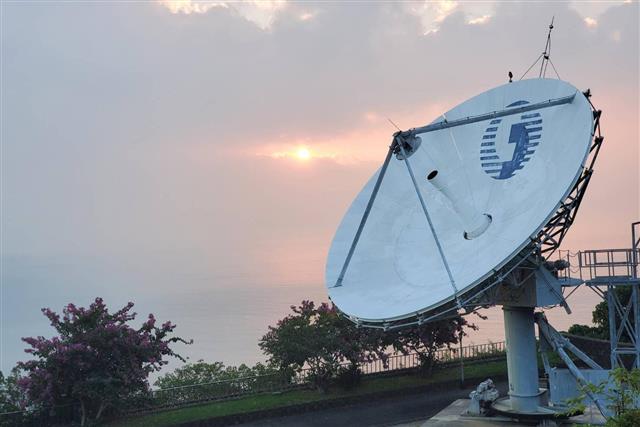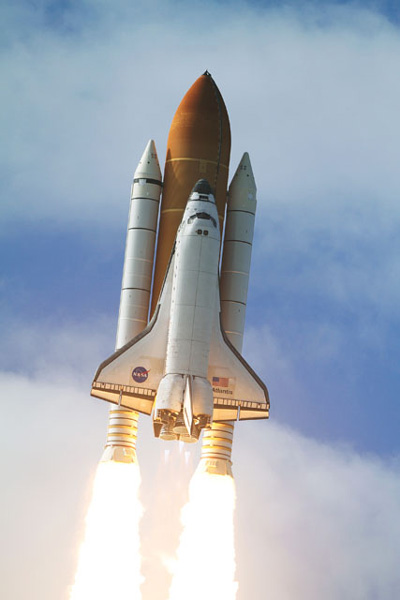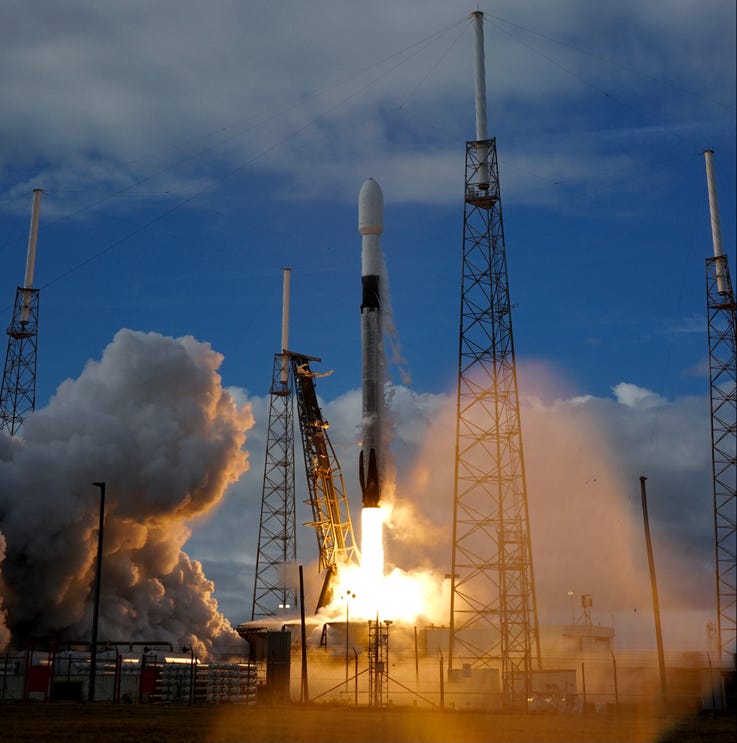Taiwan's new space challenges

Source:DIGITIMES Asia
To enable long-term domestic new space industry growth, Taiwan needs to create a new space industry ecosystem by building a network of businesses that can adapt to the market's needs and attract global talent to fuel it.
Views
Taiwan's new space challenges
By Jason Wangweb only
Intro
On August 1st, the Director of National Chiao Tung University's Advanced Rocket Research Center, Dr. Jong-Shinn Wu, will start his new post as the Director-General of Taiwan's National Space Organization. Dr. Wu will lead Taiwan's effort to design and build domestically-produced launch vehicles and satellites. Reportedly, he aims to double NSPO's workforce by 2028 and grow its budget to an annual USD 100 million. Rather than focus on existing space system providers or corporate incentives to bring in foreign players, Let us instead examine the fundamental changes necessary to enable long-term domestic new space industry development and growth.
Tale of Two Countries
Let's first dispense with the inevitable China market comparisons. First, Taiwan's semiconductor dominance as well as talented hardware and software engineering workforce credibly give Taiwan a raw competitive advantage. The New Space industry players are already working with Taiwanese companies. Taiwan already produces ground and space-based components for the likes of SpaceX’s Starlink and other constellation operators. Moreover, Taiwan's intellectual property-friendly legal system and democratic-principled government benefit companies that prefer to operate in a rule of law-based business environment.
 (Source: MAURICE TSAI/BLOOMBERG NEWS)
(Source: MAURICE TSAI/BLOOMBERG NEWS)
Taiwan's business environment is in stark contrast to the People's Republic of China. While China may seem advantageous from a market scaling point of view, China's challenging intellectual property environment and recent heavy-handed government actions toward tech companies are less than appealing to potential Western partners and their investors. China's military-civil fusion strategy, where the People’s Liberation Army runs its national space program, makes the appropriation of advanced dual-use technologies a severe concern. If that isn't concern enough, the recent discovery of three new inter-continental missile sites, all less than a year old, can each support 100+ strategic nuclear missiles. The PLA is the primary customer for China's new space companies, and doing any business with PRC New Space as a supplier is fraught with problems, including legal peril for US companies.
So now that we have put this aside, let's focus on what it will take to grow Taiwan's New Space industry.
Focus Areas for Taiwan
While Taiwan's human resources and legal environment give it a competitive advantage, there are challenges. The question is: how effectively can the Tsai Administration rally a whole-of-government approach to make it easier for the best of the global New Space industry to come to Taiwan and build a local presence while simultaneously building a long-term foundation for growth. As I see it, there are five strategic focus areas necessary to create a new space industry ecosystem:
- Infrastructure for new space industry development
- Risk-tolerant funding, a.k.a a Taiwan Space Fund
- Regulatory reform and coordination
- Space situational awareness
- A focus on software applications as well as hardware
- An education system redesigned to produce multi-disciplinary talent
Infrastructure for New Space Industry Development
Infrastructure comes in different forms: launch and test facilities to support hardware development for domestic and international companies. (Note: This list is not exhaustive, but just to get the conversation going!)
I would love to see Virgin Galactic or SpaceX set up operations in Taiwan. Taiwan, being closer to the equator than Kennedy Space Center, is ideal for launching rockets. However, Taiwan will need to develop and build the transportation, rocket assembly, and other infrastructure necessary to support different domestic and international launch partners. This is no small feat. In addition, frequent powerful typhoons on waters around Taiwan add another layer of challenge. (No complaints from surfers who flock to Taiwan in droves!) Fortunately, Taiwanese construction companies have plenty of experience. As it currently stands, Taiwan has yet to develop its version of New Mexico's SpacePort America or something more robust like NASA's Merritt Island facilities used by ULA and SpaceX.
 (Source: NASA)
(Source: NASA)
Perhaps more pressing is testing infrastructure. Spacecraft designers and component manufacturers need a wide range of specialized testing facilities. Mechanical and electronic components must survive the bone-rattling g's of launch to the extreme temperature swings, the vacuum of space, and ionizing radiation of space. The next generation of satellites will have both radiofrequency and inter-satellite links using lasers, so Taiwan will need facilities that can fit spacecraft or components of various sizes for testing free space optics for intersatellite links as well. The NSPO may already have some of this infrastructure but it must be made available to international companies who have established a presence in Taiwan on a reasonable fee basis. Most importantly, the NSPO could enable the Taiwan Chip Industry to become the global leader in radiation-rated test and certification domestically and abroad.
Risk Tolerant Funding
While we revel in SpaceX’s Falcon 9 reusable rocket success rate, the early years were not easy. In 2021, SpaceX’s engineering team suffered multiple failures with their latest rocket Starship. When developing a new rocket and engine, the likelihood of failure is high but valuable. Failure helps eliminate long-term risk. This is only possible with risk tolerant funding from the Taiwan government and investors at large.
To drive commercialization, the United States has several high-risk high-impact technology funds. The Advanced Research Projects Agency for Energy or SpaceWERX serve as good innovation funding models. Where the funds also help guide the partnering and commercialization. The Taiwan government is taking steps to build a more risk tolerant portfolio of funding vehicles, most recently for advanced semiconductors and renewable energy. The same effort must be applied to the New Space industry to make Taiwan a global hub. Taiwan’s high-value supply chain and software engineering talent is well-suited for more than just launch and satellite companies, but also companies seeking to build machine learning software for imagery processing and analysis.
Regulatory Reform: Marine and Air Traffic Control, Licensing
Let's discuss the most challenging area of change: domestic regulatory coordination and reform necessary to reduce friction. This needs to be carefully planned and performed across ministries and between central government and local municipalities. The Taiwan government can provide incentives for international companies, but such programs won't be successful unless Taiwan applies the whole-of-government approach to rethinking regulation.
Internationally speaking, Taiwan is in the middle of major international air and sea lanes. Depending on who you ask, three of the top ten global shipping companies operate from Taiwan. Hundreds of aircraft fly from and past Taiwan each day. For Taiwan to have a robust space launch industry, the Taiwan Civil Aeronautics Agency and NSPO will need to jointly build policies and, consequently, the software systems to coordinate aircraft, spacecraft, and maritime traffic. By developing this capability, Taiwan can show international leadership. How, you might ask?
In June 2021, SpaceX lost a precious launch window seconds before launch due to a helicopter entering the "keep-out zone". Despite our digitalized world, coordination for launch is still primarily analog, and keep-out zones are large. Taiwan can lead by developing air traffic and maritime coordination software to automatically notify, disseminate and monitor airspace to support weekly launches so keep-out zones can be smaller. This is the level of international coordination required to increase advance notification and safety, so exclusion zones do not infringe significantly on maritime or air traffic. Successful implementation by Taiwan would delineate Taiwan airspace as a development zone for international space commerce.
 (Source: FLORIDA TODAY)
(Source: FLORIDA TODAY)
Space Situational Awareness
If you think air traffic coordination is complex, consider the millions of pieces of debris that orbit the earth after a half-century of launches. Getting to space is hard as many things need to go right: good weather, two hour keep-out zones prior to launch set up and monitored, perfect rocket performance, and most important of all --no debris clouds that could make your payload swiss cheese. Precise launch windows are precious. A speck of paint traveling at orbital velocities of 7.5 km/s can easily damage a spacecraft or equipment.
As the number of launches and satellites increase, so will space debris. Taiwan has the ability to build out the radar systems to track space debris. To become a booming space hub, Taiwan will need to build radar facilities and connect them with similar facilities worldwide. There is a side benefit. Building Taiwan space situational awareness is helpful not only for the space program but for Taiwan’s regional allies.
Focus on software applications as well as hardware
While rockets are exciting, the real money for Taiwan is in satellite applications and data analysis. This part of the value chain generates the highest margins and is the most scalable. The software that powers the industry applications that the geospatial data supports will serve as a moat that will protect Taiwan's competitive advantage. There is a major opportunity here.
Geospatial software, like ENVI or ArcGIS, is not inexpensive. We are talking about thousands of dollars per seat per year. This creates a speed limit to the geospatial data’s growth into other industries. Fortunately, Taiwan's open source movement and machine learning prowess coupled with semiconductor hardware acceleration can transform geospatial data into higher-margin applications and services. Taiwan has done it before. Taiwan can guarantee its place in the future by making sure that geospatial data and software is affordable and cheaply available for the average person to use, whether it is a mango farmer in Chiayi or a petrochemical analyst in Mumbai.
Education Redesign
To the casual observer, Taiwan is a hardware and semiconductor haven. The fact is, Taiwan also nurtures excellent software developers in addition to hardware engineers. The future requires every New Space worker to be able to code and master a wide-range of disciplines. Taiwan’s education system needs to transform further to produce the talent necessary to build a new GDP pillar. Transforming Taiwan into an international space hub will take legions of multidisciplinary engineers and scientists to build software systems that fly spacecraft to the algorithms that interpret data collected. This effort will require NSPO and its parent organization, the Ministry of Science and Technology, to develop programs to seed young budding minds, internships, and fund postdoctoral research. Alternative military service could also include NSPO affiliated research programs with foreign companies.
 (Source: NASA)
(Source: NASA)
The Tsai administration can encourage foreign companies to engage with Taiwan universities to develop programs to pump out a new generation of software engineers and data scientists to lead Taiwan into the next century. The European Space Agency already works with corporations like Maxar and Iceye to open source their archive data or make it available to academia. The industry benefits when students have real-world examples to develop software the world can use today: oil spill analysis, earthquake interferometry, flood extent mapping, change detection, maritime domain awareness, insurance risk modeling, shipping logistics support, water quality and deforestation.
While many will argue that investing in building such resources will only result in the exodus of domestic talent, I remind critics that the pandemic has changed the future of remote work. Remote work is a reality. Taiwanese talent for the new space industry can work for a foreign company without leaving the comfort of Taiwan. Taiwan is a supremely livable country where the time zone difference is an advantage, not a liability. That means more than ever Taiwanese talent can stay and develop the domestic industry.
Wrap up
Taiwan has all the critical elements to turn the New Space industry into a new GDP pillar with international reach. Taiwan's semiconductor industry already has a crucial competitive advantage. Building a domestic New Space Industry that grows with the global players means focusing on more than just hardware and infrastructure but building the technical talent that will create the higher-margin services that will make geospatial data invisible to the average user, like GPS did for navigation. That means building a regulatory and business environment that enables creative, out-of-the-box thinking that attracts talent and partners to fuel domestic technical prowess and quickly adapt to the market's needs. Taiwan did it before with TSMC and UMC, but that was decades ago. The change in leadership at the NSPO is one of many steps necessary to build a new pillar of growth in Taiwan.
(This piece reflects the author's opinion, and does not represent the opinion of CommonWealth Magazine.)
About the author:
王柏仁 / Jason Wang
Mr. Wang is a leading cross-border practitioner at the intersection of public policy, telecommunications, media, and technology. He is a Silicon Valley and DC veteran with deep experience in satellite technologies, mobile communications, and information security across four continents and Taiwan.
Have you read?
♦ China's New Space Economy and Taiwan’s Opportunity
♦ Taiwan needs an Indo-Pacific policy involving the Pacific Islands
Uploaded by Jane Chen






